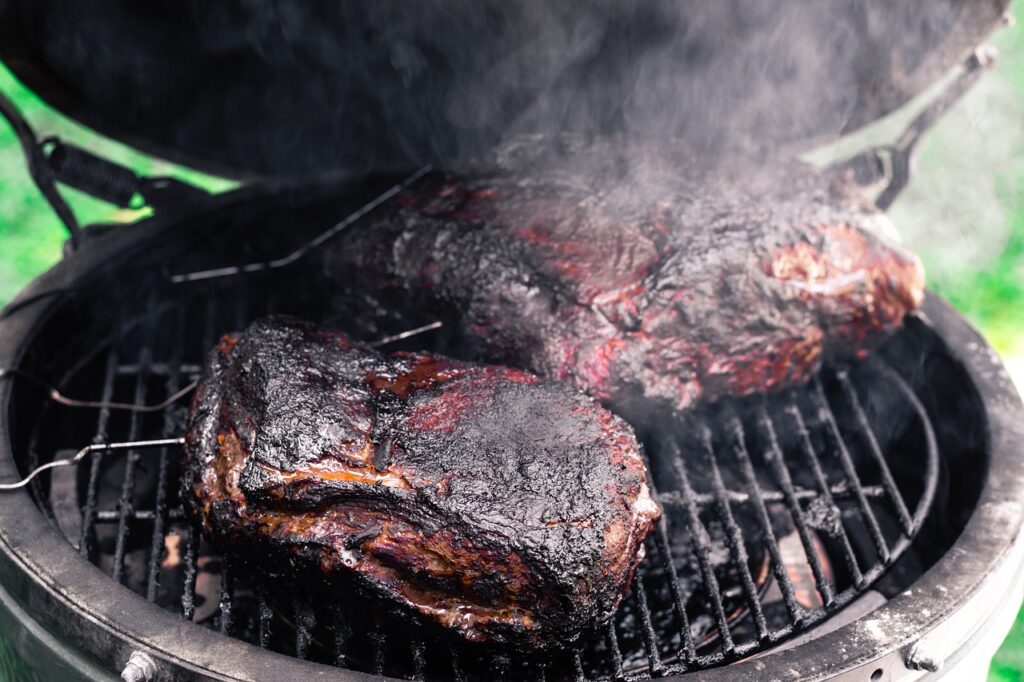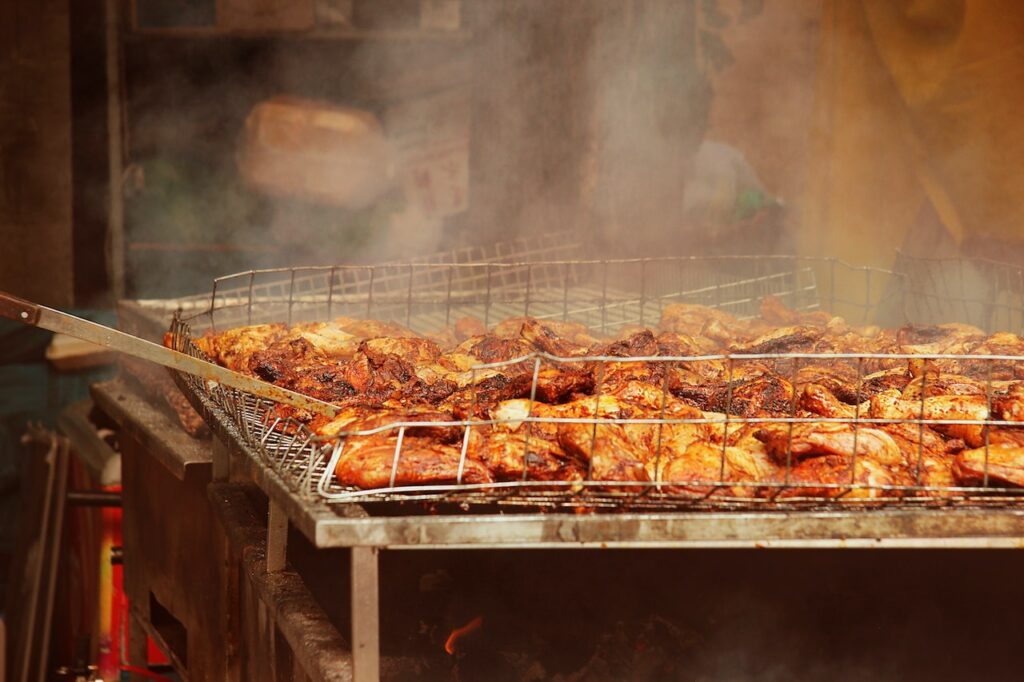In the grand tapestry of BBQ traditions, pulled pork unquestionably holds a place of honor. Its rich flavors, melded over slow-cooked hours, tell tales of family gatherings, joyous occasions, and the simple bliss that is a weekend at the grill. You must be itching to embark on this gastronomic journey, aren’t you? Well, let’s not keep you waiting! Here’s your roadmap to creating a pulled pork dish that resonates with perfection and a harmony of flavors, sure to dazzle anyone with a penchant for BBQ delights.
Selection of Pork Shoulder – The Prima Donna
The selection of the pork shoulder, also affectionately known as the Boston Butt, is your first and possibly most vital step. This cut is the Prima Donna of the BBQ world, generously marbled and packed with flavor potential. But how can one choose the perfect star for our culinary show?
- Quality Matters: Opt for organic, free-range pork. It may cost a bit more but the flavor profile is incomparably rich and robust.
- Marbling is Key: Look for a piece with beautiful marbling, as this fat will melt into the meat during the cooking process, ensuring a moist and tender result.
Wouldn’t it be something if your pork shoulder could tell stories of happy, sun-soaked days before becoming your BBQ masterpiece? It’s all in the details, dear friend.
Crafting the Perfect Rub – The Flavor Symphony
Creating a rub for your pork shoulder is akin to composing a symphony; each spice and herb playing a pivotal role in a larger, harmonious melody of flavors. Are you ready to conduct this symphony?
The Basics:
- Paprika: This spice is the backbone, lending a smoky, sweet note.
- Brown Sugar: A sweet counterpoint to the heat.
- Cayenne Pepper: Adds a kick that dances delightfully on the palate.
The Complex Notes:
- Garlic & Onion Powder: These add depth, bringing an earthy note to the melody.
- Ground Mustard: A subtle tanginess, a whisper of complexity in each bite.
Tip: Remember, a good rub needs to rest on the meat for at least a few hours, allowing the flavors to penetrate deeply. Are you feeling the rhythmic pulse of flavor development?
Setting the Stage – Preparing Your Grill
Setting up your grill is no less important than selecting your pork shoulder. Think of your grill as the stage where your Prima Donna will perform. Ready to set the stage?
- Clean the Grill: Start with a clean stage to avoid any unwanted flavors.
- Create a Two-Zone Fire: This method allows for both searing and slow cooking, providing the control you need for a flawless performance.
- Preheat to the Right Temperature: Aim for a temperature of 225°F to 250°F, the sweet spot for slow cooking pork.
Can you feel the anticipation building, as the embers glow and the stage is set? Hold that thought, the best is yet to come!
Slow and Low – The Art of Patience
The cooking process for pulled pork is a masterclass in the art of patience. Slow and low, that’s the tempo. Are you prepared to immerse yourself in this tranquil yet thrilling culinary meditation?
- Searing the Pork Shoulder: Start with a good sear to lock in the juices and create a beautiful crust.
- Maintaining a Consistent Temperature: This is crucial, fluctuating temperatures can result in uneven cooking.
- Adding Wood Chips for Smoke: Incorporate fruitwoods like apple or cherry for a sweet, mild smokiness that complements the pork perfectly.
Imagine the pork shoulder, dancing slowly in the embrace of smoke and gentle heat, absorbing flavors and transforming over many hours into a thing of beauty. Can you hear the gentle sizzle, the music of BBQ?
Basting – The Loving Touch
During the long cooking journey, basting is the loving touch that nurtures your pork shoulder, encouraging it to blossom into its best version. Ever considered the parallel between basting and painting a canvas?
- Selecting a Baste: A mixture of apple cider vinegar and water, with a touch of the spice rub, is a traditional choice.
- Frequency: Baste every hour to maintain moisture and build a crust of flavor.
Picture the basting brush as your paintbrush, gradually building layers of flavor, texture, and color to create a masterpiece. Feels almost like an artistic pursuit, doesn’t it?
Checking for Doneness – The Grand Finale
As we approach the grand finale, the crescendo of flavors and textures, knowing when your pork is ready to step off the stage is critical. How does one recognize the moment of perfection?
- Internal Temperature: Your thermometer is your best friend here. A temperature of 195°F to 205°F signals that your pork is ready to be pulled.
- The Bone Test: If your pork shoulder has a bone, it should slide out clean with little resistance.
Do you feel the excitement bubbling as you stand at the cusp of culinary greatness, ready to unveil your masterpiece? Hold your breath, it’s almost time!
Resting and Pulling – The Encore
Now, before the curtains close, there’s the encore. The resting and pulling are the final acts in this grand production, where textures and flavors take a final bow. Ready to witness the magic?
- Resting: Allow your masterpiece to rest for at least 30 minutes, letting the juices redistribute.
- Pulling: Use forks to pull the meat apart, revealing moist, tender strands of flavor-infused pork.
Imagine the applause, the oohs, and aahs as you present the platter of pulled pork, a testimony to your culinary skill and patience. Bask in the admiration, you’ve earned it!
The Key Takeaway – A Culinary Adventure
Embarking on the journey of crafting the ultimate BBQ pulled pork is not merely a culinary endeavor, but an adventure filled with excitement, patience, and the joyous discovery of flavors. The satisfaction derived from mastering this art is unparalleled, wouldn’t you agree?
Remember, every BBQ is an opportunity to explore, to learn, and to celebrate the myriad flavors that make life so deliciously vibrant. Here’s to many more flavor explosions, where each grilling session is a story of joy, camaraderie, and shared bliss.
Happy Grilling!



